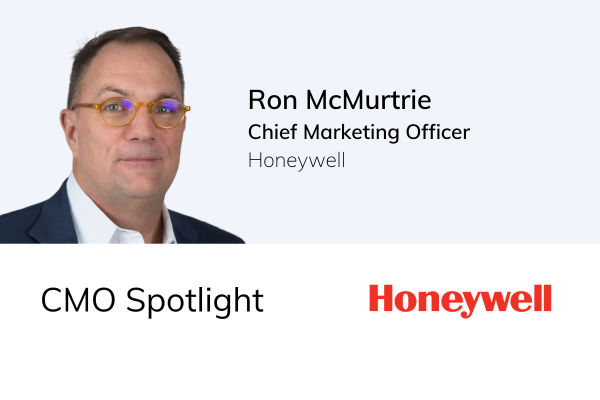The Future of Artificial Intelligence and Data Analytics in Marketing
The world of digital media is constantly evolving and marketers need to learn how to adjust and grow with the changes. Marketers have access to analytical data like never before, influencing every step of their marketing strategies and enhancing their content production. The evolution of technology also affects marketing roles as artificial intelligence (AI) comes into play.
The Atlanta Interactive Marketing Association (AIMA) is known for bringing together digital media and interactive marketing professionals in the community to network and share ideas about current trends.
AIMA hosted an informative session about the future of analytics and artificial intelligence (A.I.) at Nebo Agency. They invited industry leaders from Adobe (Dave Billbrough), Coca-Cola (Morgan Yates), Crimson Hexagon (Tom McGrath), and Emory University (Vilma Todri) to share their thoughts and experiences regarding the future of predictive technology.
Related: The Evolution of Marketing: How AI is Reshaping Marketing in 2024
From left to right, the panelists featured at Nebo for AIMA's Future of Analytics event: Adobe (Dave Billbrough), Coca-Cola (Morgan Yates), Crimson Hexagon (Tom McGrath), and Emory University (Vilma Todri)
What are the main takeaways marketers can implement from the panel’s insights?
Marketing is about creating an experience for the consumer.
Dave from Adobe recalled that advertisements from the 80s differ from modern ads because they solely focused on the product. Consumers do not care about what a company is selling. “People like content about themselves” - they only care about how it can benefit themselves and make their day to day easier.
Successful brands win over consumers by tracking and listening to the consumer’s preferences and centering their brand on how they can better serve and impact the consumer. Marketers can use AI and data to better assess their consumers wants through predictive analysis. Predictive marketing is using data to guess what the consumer wants to purchase. Paying attention to the consumer’s needs and knowing their persona adds a personalized touch and gains the consumer’s favor.
An easy and free way to acquire knowledge about consumer interests is through social media channels. Morgan from Coca-Cola mentioned that social media is a “valuable tool to quickly identify the audience, the advocates of brands, and honest reactions” to the brand’s methods. Happy consumers become brand loyalists who tend to post about the brand they love. Earned media is honest and speaks volumes to the brand’s likeability and efforts. Earn this likability by engaging with users through visual methods - gifs, videos, and pictures are more appealing to followers than text.
Dave claimed that by using data to drive messaging and analytics to predict behavior, brands can work towards integrating themselves to “become a part of how the customer lives their life” instead of merely meeting the customer’s needs.
Read Related - Marketing a Brand Experience is the Key to the Consumer's Heart
Consumers prioritize convenience above all else.
During the Question and Answer portion of the panel, there was debate about whether or not data analytics was intruding upon a consumer’s right to privacy and the moral obligation of marketers to protect the consumer’s data.
Tom from Crimson Hexagon emphasized that with the spike in AI and access to data, marketers must have an education on ethics. The panel all agreed that it was up to the consumer to choose to or not provide their information but that, eventually, information would serve as a form of currency. They also agreed that the consumer would willingly give up this information if it improved their everyday life.
Vilma from Emory University stated that AI could transform the purchasing process. If the store is offering convenience for the consumer, does that affect the demand for the product. One day in the future, a consumer will not have to remember to go to the store to buy groceries, and the time and stress this will save is a major convenience.
Dave mentioned that the Transportation Security Administration (TSA) is leaning towards facial recognition as opposed to regular check-ins for flights. By removing check-in obstacles, the biometric process could alleviate anxiety and may be enough for people to accept the change.
Marketers must be selective about what information they are collecting. Since data collection can be invasive, consumers will only participate in programs relevant to them. Collect only the most valuable and meaningful information.
“Our level of effort determines our level of return,” stated Morgan. “It is the micro-moments that are relevant to us.”
The difference between humans and machines will disappear.
What separates humans from machines (besides the obvious physical attributes) is the ability for humans to feel, process emotion, and innovate.
What is AI? Tom said it is, “Anything that replicates human intelligence” and Vilma said, “Science makes machines intelligent. Intelligence is how the human brain works.” Currently, machines can perform tasks and process data at rapid speeds, but they cannot decipher the “why” behind something. Tom stated that a machine would interpret the movie “Mad Max” with negative sentiment because of the word “Mad,” when the intent is positive . Humans can tell the difference.
The advantages humans have over machines is their creativity and emotional brain power. Machines, however, are rapidly improving. Some experts state that by the year 2035, computers will be more intelligent than humans. Machines are rapidly advancing because humans are constantly finding methods or setting goals to make life better. Tom said people will keep pushing “as long as we can optimize lives, we will continue to push those boundaries.”
What does the machine learning mean for humans? Marketers must take what they learn from the machines and apply it in their strategy. Use the data from campaigns to inform future strategies and make real time and relevant campaigns. If you can’t beat them, join (and copy) them.
































Over the past year, we’ve watched the following patterns emerge across seemingly unrelated sectors: rising consumer expectations, demand for authenticity, growing complexity, and the tension between automation and human connection.
We interviewed multiple marketers from an array of industries in our blogs below, and we discovered consistent trends across the board. Check out all of our industry blogs throughout 2025 from leaders at Blackbaud, Hiscox USA, Mimedx, MONPURE, Kimberly-Clark Professional, and more.